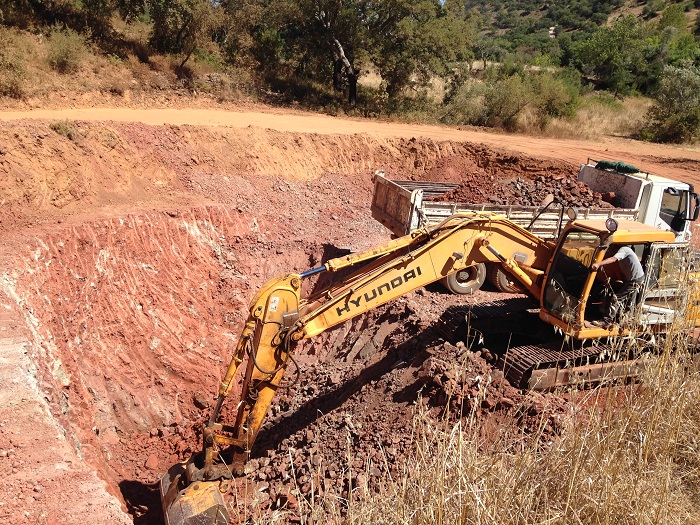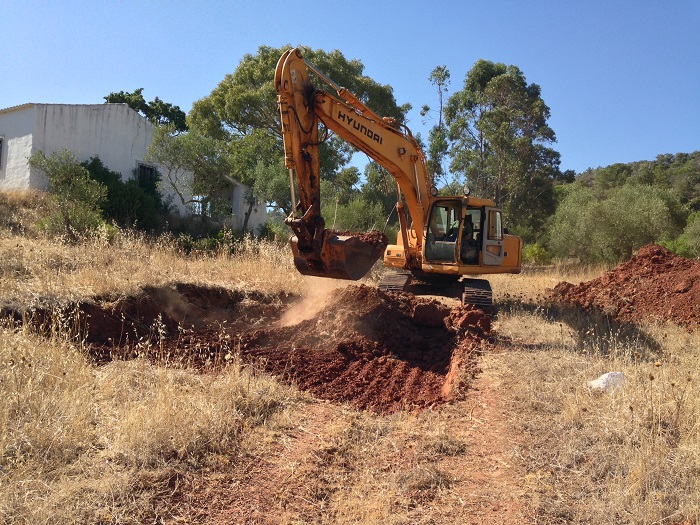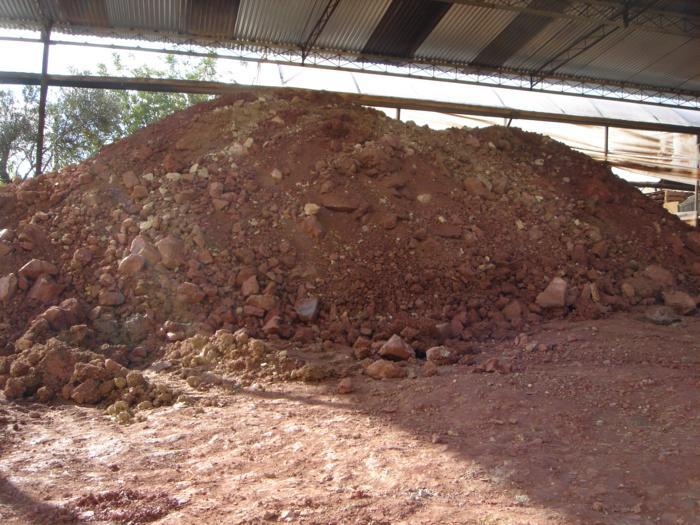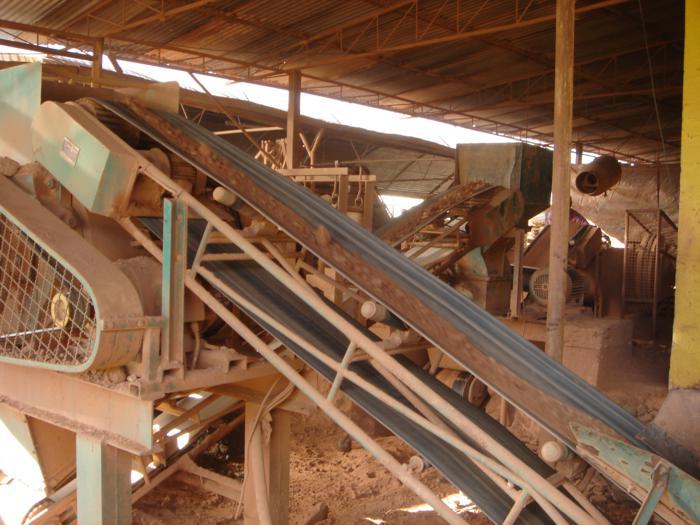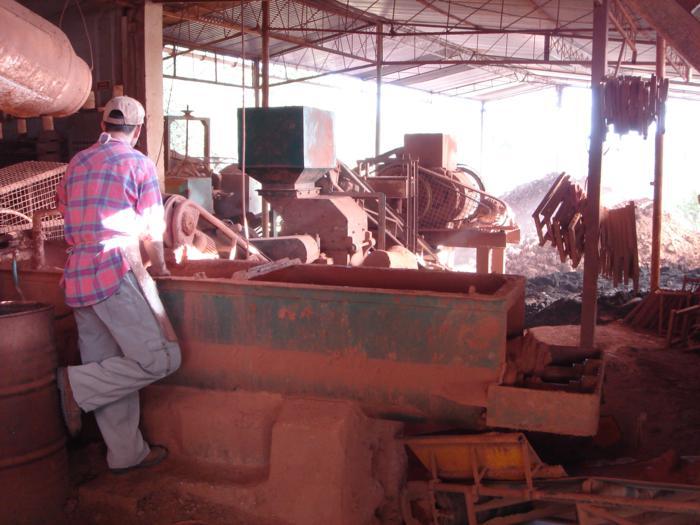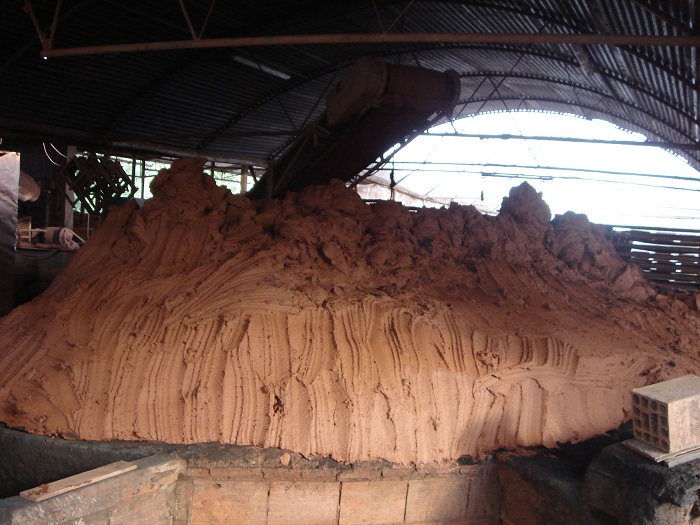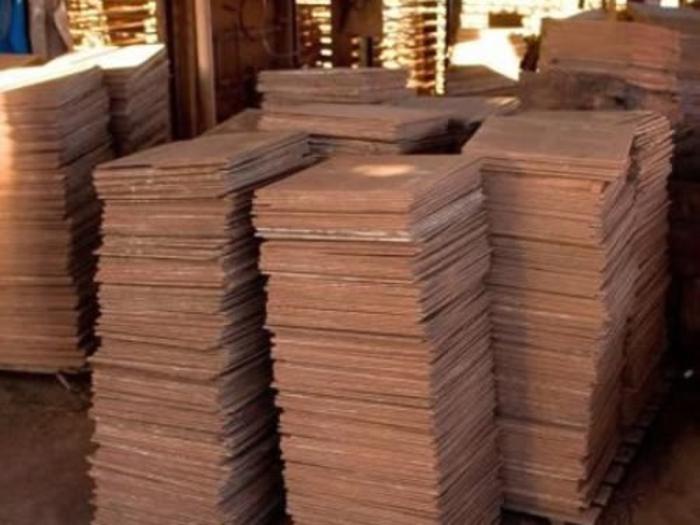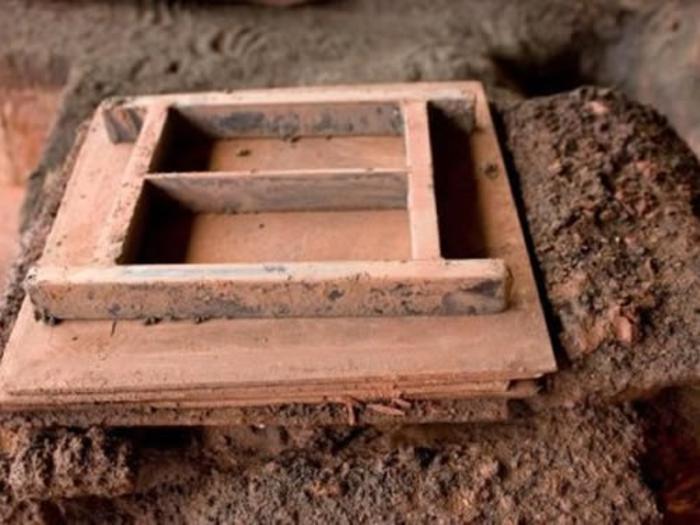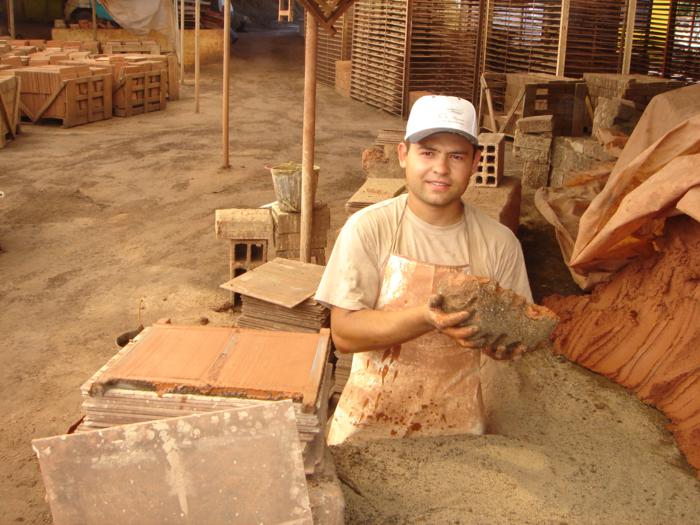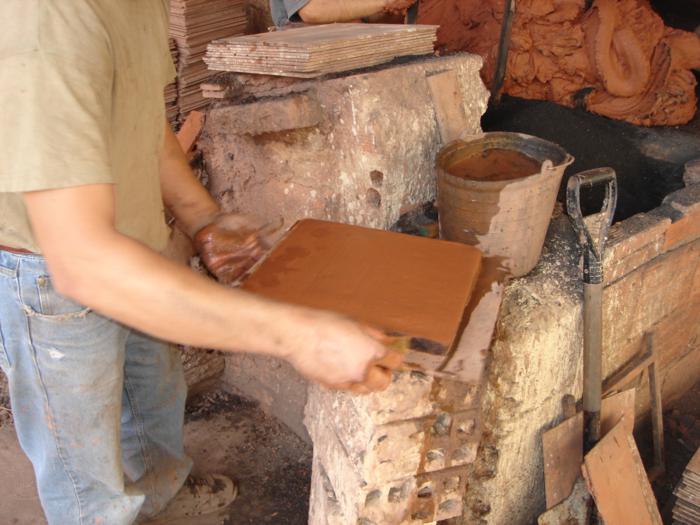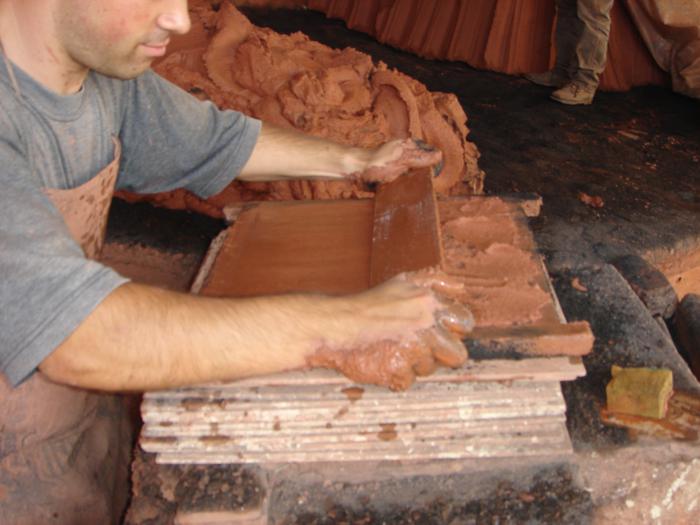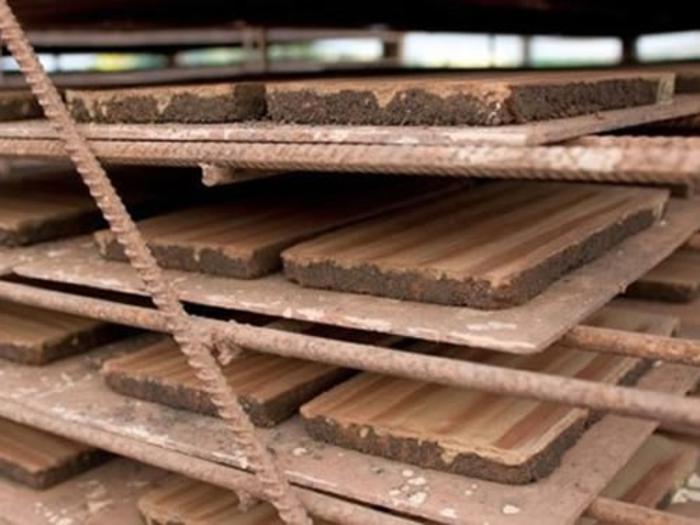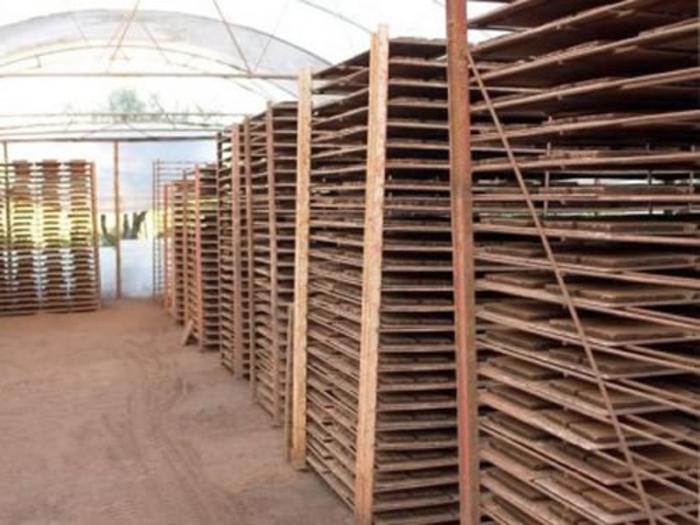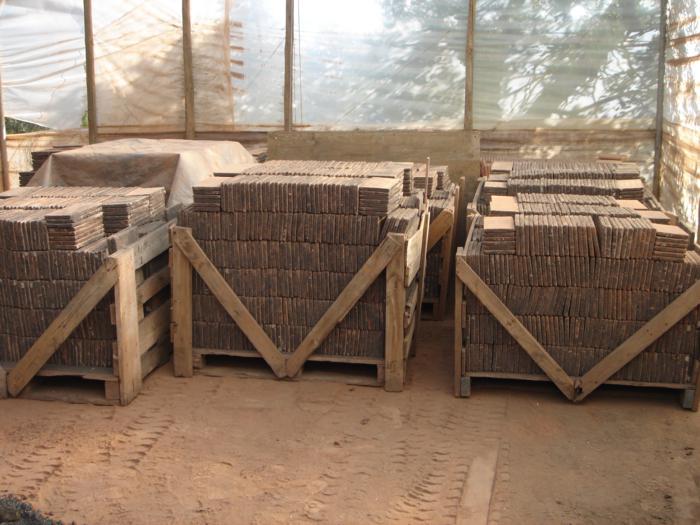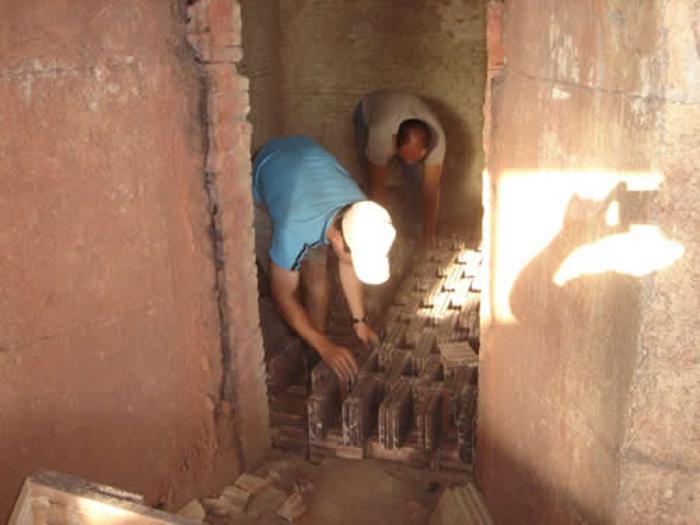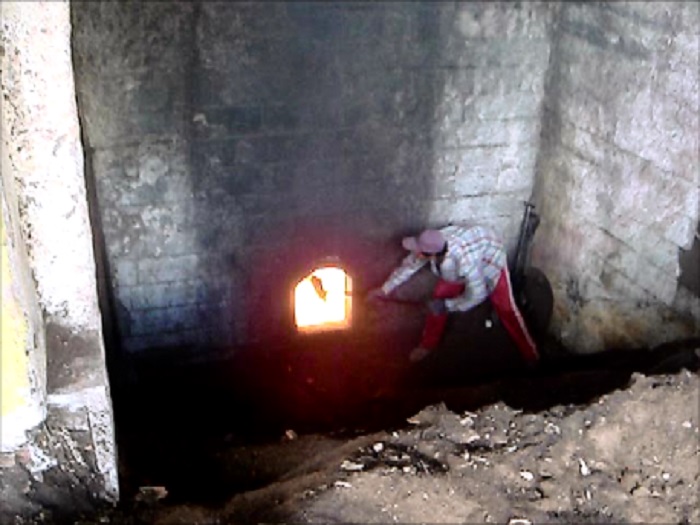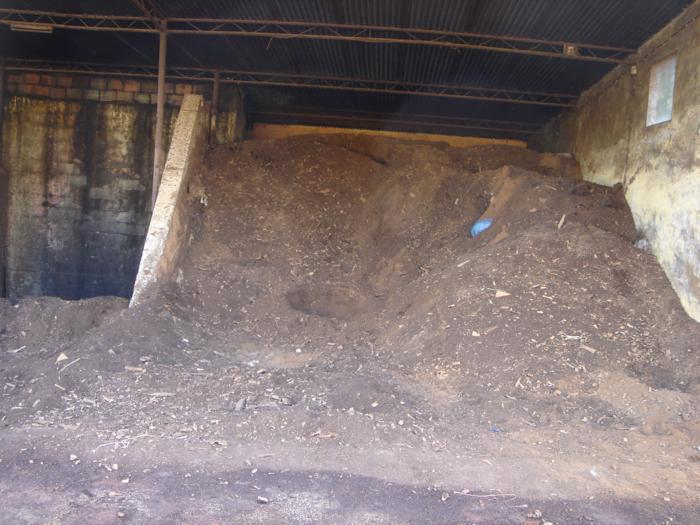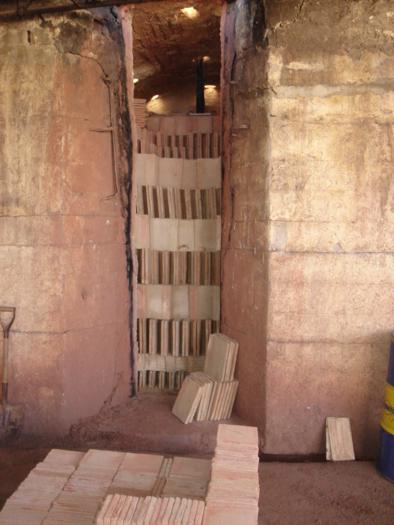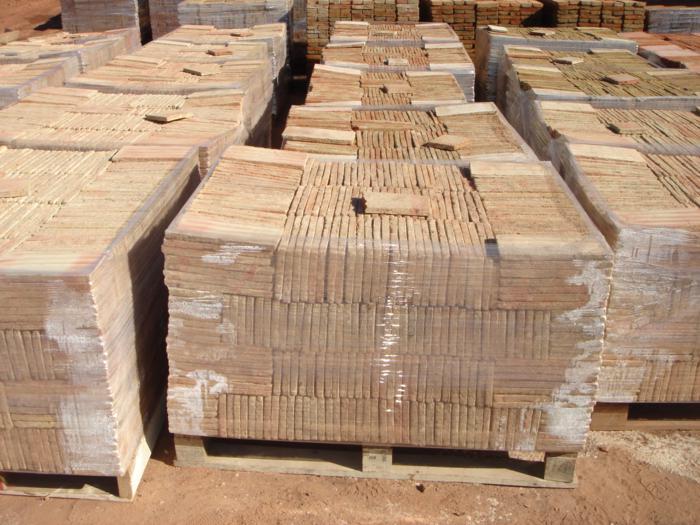In our specific case, the Terracota is produced by hand to maintain the original characteristics of the product. It goes through several phases that we will try to explain in detail.
Clay Extraction
Two types of clay are extracted, red and white, that after combined in the right proportion will lead to the raw material that is used in tiles and other products. During the extraction process we need to clean carefully around the lode of clay so that it is not contaminated with stones, dirt or any other material that may damage its quality. Both types of clay, red and white, are transported on trucks to the ceramic factory and are stored in two separate lots, being mixed only at the time that the paste preparation phase takes place. This is because we don’t always use the same ratio of each, it depends on the type of Terracotta we want to produce and the end result we want to achieve, tone, etc.
Preparation of the paste
The clay is first mixed in the desired proportion, before being crushed and crumpled, earning a consistency similar to plasticine. The paste is left to rest for some time in order to gain better consistency, so then it can be molded in various shapes and sizes. This is the only phase in which machines are used to facilitate the process. Until relatively few years all the work of preparing the paste was done exclusively by hand, which besides being very hard work, eventually became unbearable expensive.
Molding the Terracotta
It is from here that our manufacturing process is different, since the tiles, bricks and other decorative pieces are all molded by hand, one by one, giving each piece a unique look. We still have two different ways of making the terracotta, which essentially depends on the manner in which we remove de paste from the mould: unmolded by sand or water. The majority of the terracotta which we produce as a natural clay finish, this is, with the original color of the paste that is molded. However, the so-called “Santa Catarina Tiles” have a finishing with white clay in the form of some vertical stripes made with the fingers of the person who molds them at that same moment. At the molding stage the work is done by teams of two people: one that shapes the terracotta and one that does the finishings and puts them in dryers.
Drying
The clay needs to dry completely before going to the oven. The drying time can take a week in the summer or more than a month in winter. This happens because the drying is done naturally at room temperature. At this stage some parts may crack or warp, if there is a large temperature variation. This occurs particularly with larger pieces: terracotta 40×40 cm and 30×30 cm.
Baking
After being dried, the clay is carried into the oven where it is put into the furnace by layers: at the bottom of the furnace we place the “tijolo burro” brick, then the tiles with the various shapes and sizes, and finally at the top the smaller pieces and tiles. And then after a few hours of preheating, the tiles are baked slowly in the oven, over more then 30 hours, acquiring a natural hue. The furnace is powered with wood, sawdust and olive pomace.
Removing from the oven and palletizing
After the baking process is finished it is necessary to wait four to five days for the oven to cool down, only then we unmold the pieces. This whole process is done manually: the material is removed from the oven, separated, selected and placed on pallets. The terracotta is then ready for the customer!
So we obtain a soft slightly pink floor, only possible through a combination of excellent raw material with a handmade process, capable of inspiring a natural and cozy feeling in your home.
We get a slightly rosy shade, possible by combining an excellent raw material with a small-scale manufacturing process capable of inspiring a natural and cozy environment in your homes.

